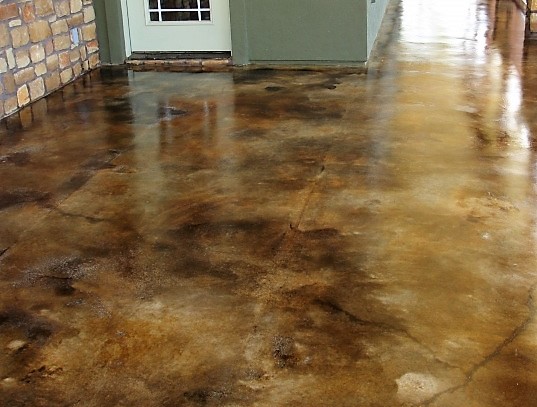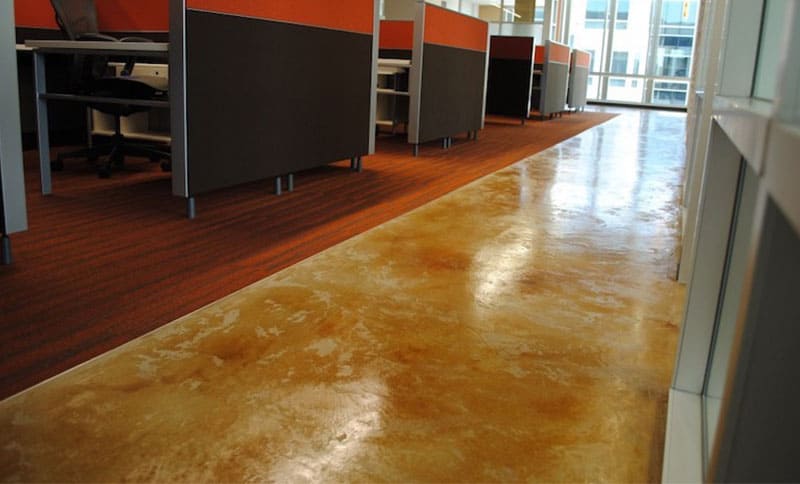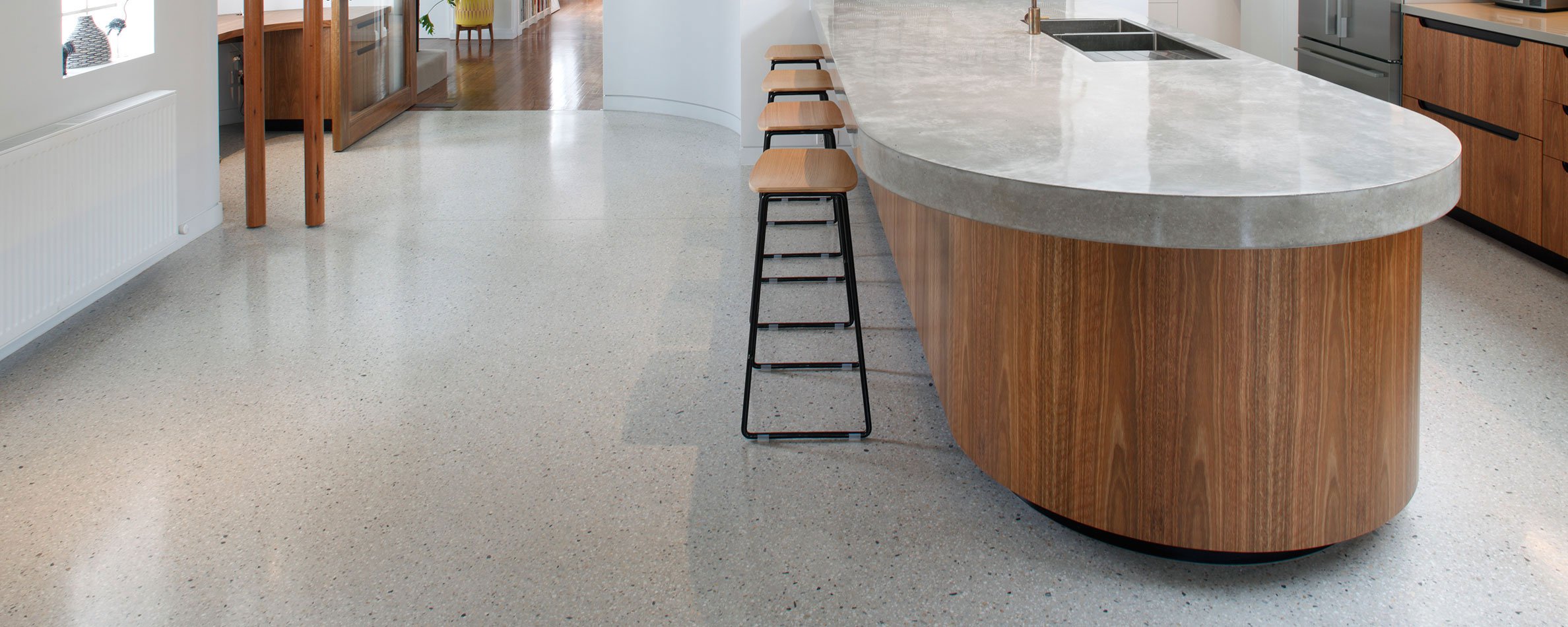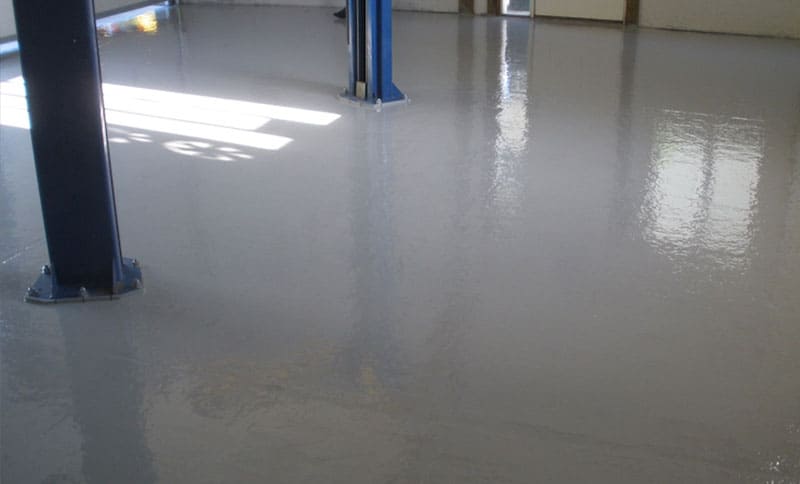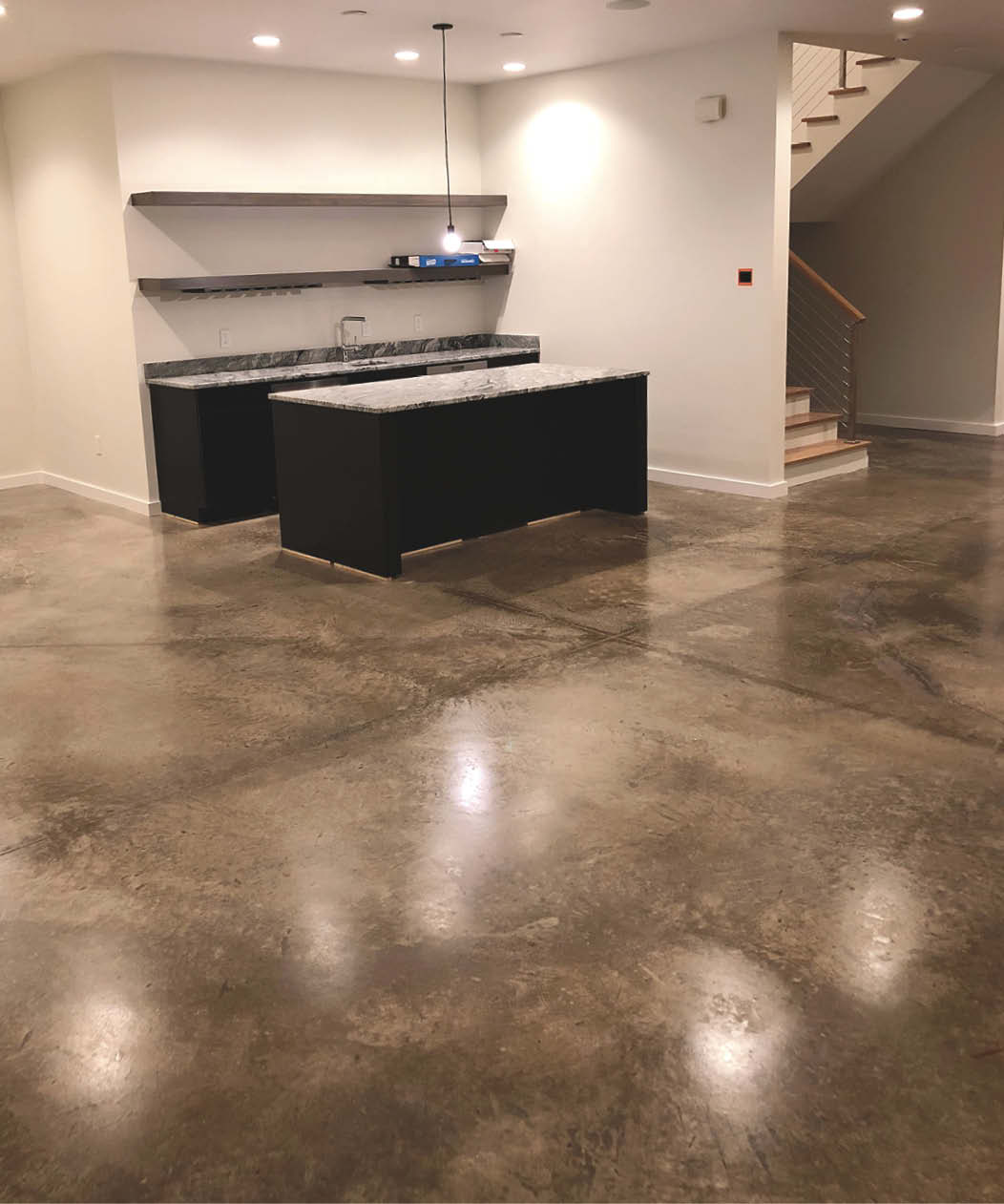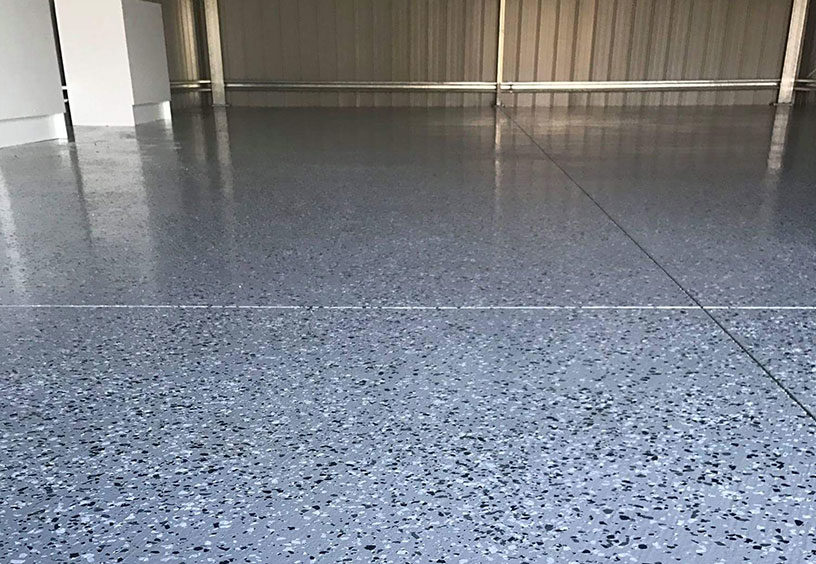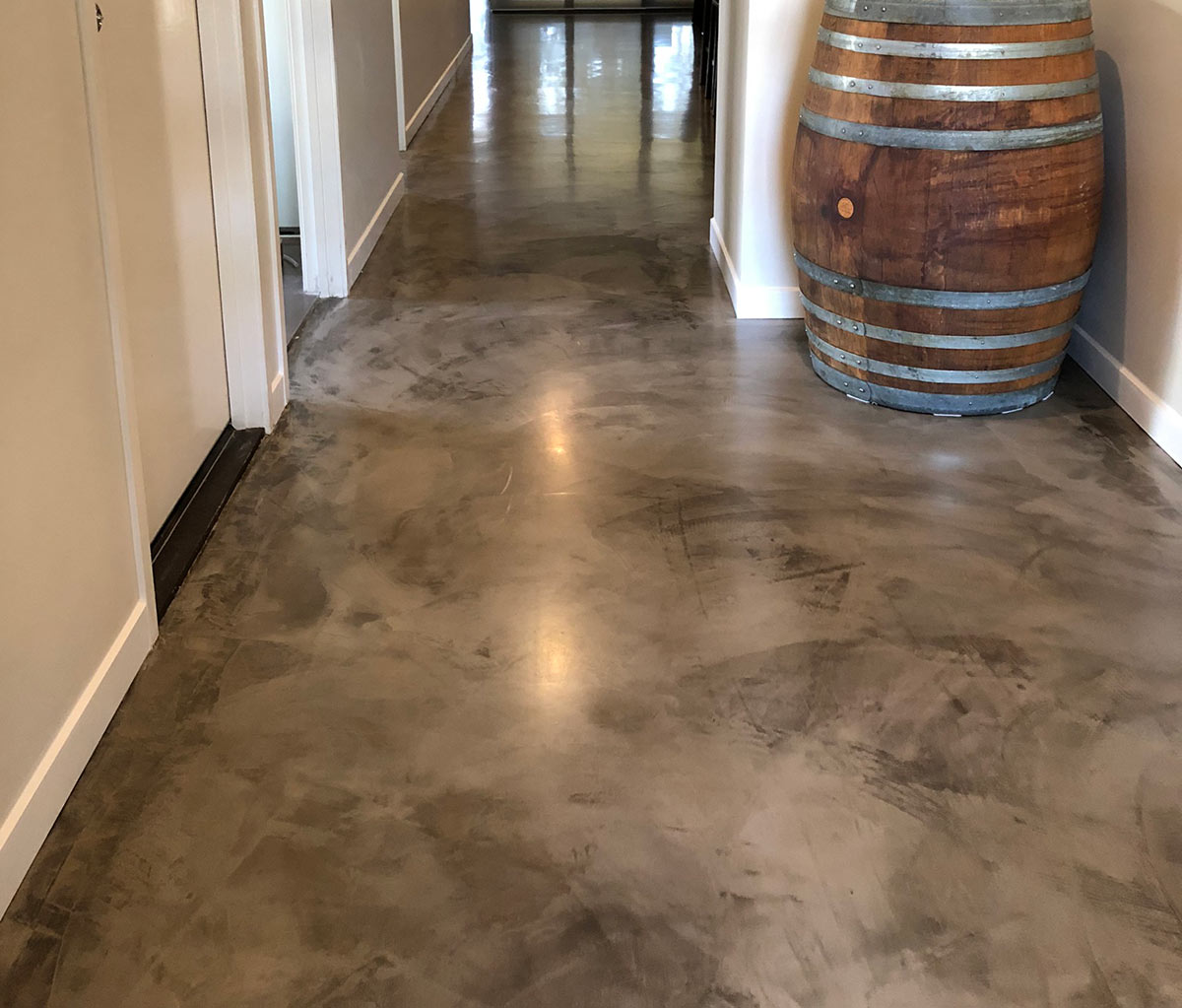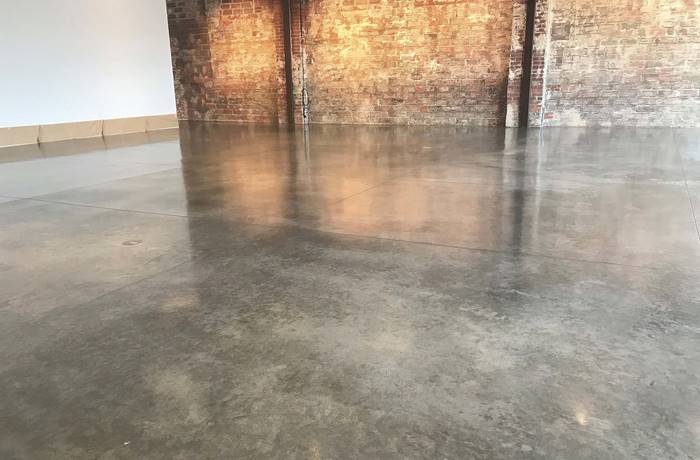Understanding Concrete Floor Finishes
Concrete floor finishes offer a wide range of options to enhance the appearance and functionality of concrete surfaces. From polished concrete to epoxy coatings, each finish has its unique characteristics and benefits. In this guide, we’ll see the different types of concrete floor finishes, their applications, and factors to consider when choosing the right finish for your project.
- Types of Concrete Floor Finishes: There are several types of concrete floor finishes available, including:
- Polished Concrete: Achieved by grinding and polishing the surface to create a smooth and glossy finish.
- Stained Concrete: Involves applying acid or water-based stains to add color and depth to the concrete surface.
- Epoxy Coatings: A protective coating applied to the concrete surface to provide durability and resistance to stains and chemicals.
- Sealed Concrete: This involves applying a sealer to the concrete surface to protect it from moisture, stains, and abrasion.
- Stamped Concrete: Uses textured mats or stamps to imprint patterns and textures onto the concrete surface.
- Benefits of Concrete Floor Finishes: Concrete floor finishes offer several benefits, including:
- Enhanced Aesthetic Appeal: Concrete floor finishes can enhance the appearance of concrete surfaces, making them more visually appealing.
- Increased Durability: Many concrete floor finishes provide added durability and resistance to wear and tear, extending the lifespan of the concrete surface.
- Improved Safety: Certain finishes, such as epoxy coatings, can improve the safety of concrete surfaces by adding slip resistance.
- Easy Maintenance: Concrete floor finishes are typically easy to clean and maintain, requiring minimal upkeep to keep them looking their best.
- Applications of Concrete Floor Finishes: Concrete floor finishes are suitable for a variety of applications, including:
- Residential: Concrete floor finishes can be used in residential settings such as living rooms, kitchens, and basements to enhance the appearance of concrete floors.
- Commercial: Concrete floor finishes are commonly used in commercial settings such as retail stores, restaurants, and office buildings for their durability and aesthetic appeal.
- Industrial: Certain finishes, such as epoxy coatings, are ideal for industrial applications such as warehouses and manufacturing facilities due to their durability and resistance to chemicals and abrasion.
- Factors to Consider When Choosing a Concrete Floor Finish: When selecting a concrete floor finish, consider factors such as:
- Traffic and Use: Consider the level of foot traffic and use the concrete surface to determine the appropriate finish.
- Aesthetic Preferences: Choose a finish that complements the design aesthetic of the space and meets your aesthetic preferences.
- Maintenance Requirements: Consider the maintenance requirements of each finish and choose one that fits your maintenance preferences and schedule.
- Budget: Consider the cost of materials and installation when choosing a concrete floor finish that fits your budget.

Popular Concrete Floor Finishes and Their Characteristics
Concrete floor finishes come in various forms, each with its unique characteristics and benefits. From polished concrete to epoxy coatings, it’s essential to understand the different finishes available and their specific qualities to choose the right one for your project. Here are some popular concrete floor finishes and their characteristics.
Polished Concrete:
-
- Characteristics: Polished concrete is achieved by grinding and polishing the surface to create a smooth and glossy finish. It enhances the natural beauty of concrete by exposing the aggregate and creating a reflective surface.
- Benefits: Polished concrete is highly durable, easy to clean, and resistant to stains and abrasion. It provides a sleek and modern aesthetic and can be customized with various levels of gloss.
Stained Concrete:
-
- Characteristics: Stained concrete involves applying acid or water-based stains to add color and depth to the concrete surface. It creates a mottled or variegated appearance, enhancing the natural variations in the concrete.
- Benefits: Stained concrete offers a unique and customizable look, with a wide range of colors and patterns available. It is durable, easy to maintain, and provides a cost-effective way to enhance the appearance of concrete surfaces.
Epoxy Coatings:
-
- Characteristics: Epoxy coatings are a protective coating applied to the concrete surface to provide durability and resistance to stains, chemicals, and abrasion. They are available in a variety of colors and finishes, including solid colors, metallics, and flakes.
- Benefits: Epoxy coatings are highly durable and long-lasting, making them ideal for high-traffic areas and industrial applications. They provide a seamless and waterproof surface that is easy to clean and maintain.
Sealed Concrete:
-
- Characteristics: Sealed concrete involves applying a sealer to the concrete surface to protect it from moisture, stains, and abrasion. Sealers are available in various formulations, including acrylic, polyurethane, and epoxy sealers.
- Benefits: Sealed concrete provides a protective barrier that enhances the durability and longevity of the concrete surface. It is resistant to moisture, stains, and UV damage, making it suitable for both indoor and outdoor applications.
Stamped Concrete:
-
- Characteristics: Stamped concrete uses textured mats or stamps to imprint patterns and textures onto the concrete surface, creating the look of natural materials such as stone, brick, or wood.
- Benefits: Stamped concrete offers a cost-effective way to achieve the look of natural materials without the expense and maintenance requirements. It is durable, customizable, and provides a decorative and textured surface.
Step-by-Step Guide to Applying Concrete Floor Finishes
Applying concrete floor finishes requires careful preparation and execution to achieve a beautiful and durable result. Whether you’re applying polished concrete, stained concrete, epoxy coatings, or another type of finish, following a step-by-step guide can help ensure a successful installation. Here is a comprehensive guide to applying concrete floor finishes.
Surface Preparation:
-
- Clean the Surface: Start by thoroughly cleaning the concrete surface to remove any dirt, dust, grease, or debris. Use a pressure washer or scrub brush and detergent to clean the surface thoroughly.
- Repair any Damage: Inspect the concrete surface for cracks, chips, or other damage, and repair any areas as needed. Fill cracks and holes with a suitable concrete patching compound and smooth the surface with a trowel.
Grinding and Polishing (for Polished Concrete):
-
- Start with Coarse Grit: Begin the grinding process with a coarse-grit diamond grinding pad to remove any surface imperfections and level the concrete surface.
- Progress to Finer Grits: Gradually progress to finer grits of diamond grinding pads to achieve the desired level of smoothness and glossiness. Continue grinding and polishing until the desired finish is achieved.
Staining (for Stained Concrete):
-
- Prepare the Surface: Apply a concrete cleaner and etching solution to prepare the surface for staining. This helps open up the pores of the concrete and allows the stain to penetrate more deeply.
- Apply the Stain: Apply the acid or water-based stain to the concrete surface using a sprayer, brush, or roller. Work in small sections and apply multiple coats as needed to achieve the desired color intensity.
Applying Epoxy Coatings:
-
- Prepare the Surface: Clean the concrete surface thoroughly and repair any damage as needed. Use a concrete grinder or shot blaster to roughen the surface and create a profile for better adhesion.
- Mix the Epoxy: Mix the epoxy coating according to the manufacturer’s instructions, ensuring proper ratios of resin and hardener. Use a mixing paddle and drill to thoroughly mix the epoxy.
Sealing the Surface:
-
- Choose the Sealer: Select a suitable sealer for the type of concrete floor finish you’re applying, whether it’s acrylic, polyurethane, or epoxy sealer.
- Apply the Sealer: Apply the sealer to the concrete surface using a roller, brush, or sprayer. Work in small sections and apply multiple coats as needed to achieve the desired level of protection and gloss.
Stamping (for Stamped Concrete):
-
- Prepare the Surface: Clean the concrete surface and apply a release agent to prevent the stamps from sticking to the concrete. Choose stamps or texture mats in the desired pattern and texture.
- Stamp the Concrete: Press the stamps or texture mats into the wet concrete surface, creating the desired pattern and texture. Work in small sections and overlap the stamps for a seamless look.
Curing and Drying:
-
- Allow Sufficient Cure Time: Allow the concrete floor finish to cure and dry completely according to the manufacturer’s recommendations before allowing foot traffic or placing furniture and fixtures on the surface.
Maintenance Tips for Concrete Floor Finishes
Maintaining concrete floor finishes is essential to preserve their appearance and durability over time. Whether you have polished concrete, stained concrete, epoxy coatings, or another type of finish, regular maintenance can help extend the lifespan of your concrete surfaces. Below we provide maintenance tips for various types of concrete floor finishes.
Polished Concrete:
-
- Regular Cleaning: Sweep or vacuum the polished concrete surface regularly to remove dirt, dust, and debris. Use a damp mop with a neutral pH cleaner to clean the surface as needed.
- Prevent Scratches: Avoid dragging heavy furniture or sharp objects across the polished concrete surface, as this can cause scratches and damage.
- Periodic Repolishing: Depending on the level of foot traffic and use, periodically repolish the concrete surface to restore its shine and luster. Use a fine-grit diamond polishing pad and polishing compound to achieve the desired gloss.
Stained Concrete:
-
- Protect the Surface: Apply a concrete sealer to the stained concrete surface to protect it from moisture, stains, and abrasion. Reapply the sealer periodically according to the manufacturer’s recommendations.
- Avoid Harsh Chemicals: Avoid using harsh chemicals or abrasive cleaners on stained concrete, as they can damage the surface and affect the color and appearance of the stain.
- Clean Spills Promptly: Clean up spills and stains promptly to prevent them from penetrating the surface and causing permanent damage. Use a mild detergent and warm water to clean stained concrete surfaces.
Epoxy Coatings:
-
- Regular Cleaning: Sweep or vacuum the epoxy-coated surface regularly to remove dirt, dust, and debris. Use a mild detergent and warm water to clean the surface as needed.
- Avoid Scratches: Avoid dragging heavy furniture or sharp objects across the epoxy-coated surface, as this can cause scratches and damage. Place felt pads on furniture legs to prevent scratching.
- Reapply Topcoat: Depending on the level of wear and tear, periodically reapply a topcoat of epoxy to restore the surface’s durability and appearance.
Sealed Concrete:
-
- Clean and Seal Regularly: Sweep or vacuum the sealed concrete surface regularly to remove dirt, dust, and debris. Reapply a concrete sealer periodically according to the manufacturer’s recommendations to maintain protection and appearance.
- Prevent Stains: Clean up spills and stains promptly to prevent them from penetrating the surface and causing permanent damage. Use a mild detergent and warm water to clean sealed concrete surfaces.
Stamped Concrete:
-
- Regular Cleaning: Sweep or vacuum the stamped concrete surface regularly to remove dirt, dust, and debris. Use a mild detergent and warm water to clean the surface as needed.
- Reapply Sealer: Depending on the level of wear and tear, periodically reapply a concrete sealer to protect the stamped concrete surface and maintain its appearance. Reapply the sealer according to the manufacturer’s recommendations.
Best Indoor Concrete Floor Finishes
DIY Basement Floor Stain and finish, 2 colors, Without Etching!
Alternative Finishes for Interior Concrete Floors – Concrete Decor
Painted concrete floors
Concrete Floor Finishes – Universal Services Group
Best Application For Indoor Concrete Floor Finishes Concrete
Concrete Floor Natural Finish – OzGrind Polished Concrete Brisbane
Polished Finish for Concrete Industrial Floors – CoGri Group Ltd
Concrete Staining Recipe: Concrete Chic – Concrete Decor
Poured Finish Flooring Choices for Use Over Concrete Slabs Using
Related Posts:
- Polished Concrete Floor With Exposed Aggregate
- How To Concrete Floors Residential
- Dark Polished Concrete Floors
- How To Stain Indoor Concrete Floor
- Ace Hardware Concrete Floor Paint
- Indoor Polished Concrete Floors
- Sealed Concrete Floor Cleaner
- Concrete Floor Receptacle Box
- Polish Old Concrete Floor
- Textured Concrete Floor Coatings
